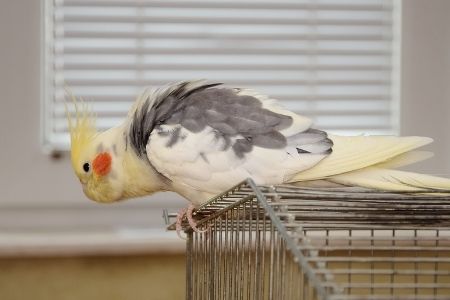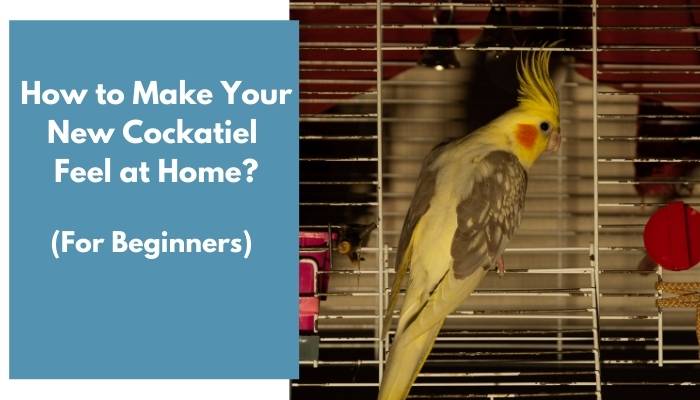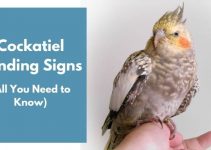Having a new cockatiel at home for the first time can be tricky and challenging. It’ll be quite tricky for the first few days, especially adjusting to their new environment and even getting them familiar with you. Despite being smart and friendly pets, moving from one place to another can be stressful for them.
So, how to make your new cockatiel feel at home? To make them feel at home, make sure to give them first ample time to adjust to their surroundings. Once they have accustomed, you can spend time near them by talking to them, offering yummy treats, and getting your feathered pet out of its cage for play.
There are different ways to deal with your new cockatiel pet.
This article will give you helpful tips on making your pet used to you, their new home, and some behaviors that a new cockatiel might have and display to you later on.
Contents
How Do I Get My New Cockatiel Used To Me?
Most of the time, the quality of your bond with your new cockatiel depends on how you interact with them the first few days after bringing them home.
In order to make your cockatiel get used to you, the first rule is to give them space to hang out on their own in the cage. Do not be so eager to play with them.
Then, you can slowly start spending time near them by sitting next to them. After that, you can start talking with them. If they get comfortable with you around them, it would be best to treat them with tasty food.
At this time, you could connect with your bird as it may start eating out of your hand and going out of the cage for playtime.
Once they are familiar with you, they will learn to like you. Make sure to spend undivided attention on them. Play them often, offer treats, teach them tricks, etc.
You may also offer gestures that invite them to trust, such as extending your hands. Be near to them when you watch TV.
You can also greet them every day when you wake up, go somewhere, or when going to sleep. Pet them through its head as a sign of affection.
You May Also Read – How old is my cockatiel?
How Do You Get A Bird Used To A New Home?
Cockatiels are having a hard time adjusting from one environment to another. These birds have the tendency to experience stress whenever they move to a new place or home.
The manner or quality of your interaction with them as their owner has a significant impact on their adjustment.
There are some tips that can help your bird get used to its new home. Here are the following.
1. Keep Its Environment Peaceful
As much as possible, make sure to place your cockatiels in a place where there are no loud noises. Put their cages in a reasonably quiet room.
Even if these birds are known to be attention seekers, it takes a couple of days before they can get used to the surroundings.
If you can’t provide your cockatiels with a quiet room, at least make sure to locate them in a place with minimal noise from other family members or pets.
2. Let Your Bird Have The Chance To Settle In
You know, as per the owner, the level of excitement you have within you bringing a new pet at home is so high. Sometimes, you seemed to be so eager that you could not stop yourself from chatting or playing with them.
Give them a chance to settle first on their new cage, feel the new breath of air in their surroundings, and explore calmly. Let them be familiar with your presence first rather than annoying them immediately.
What you can do instead is to sit next to them while you are watching your favorite show. Limit your interaction first and observe their body language.
Be aware if they have specific behavior reactions if you sit too close or far from the cage. Or if you engage in sudden movements, etc.
3. Bond With Them And Treat Them Food
By and by, you may start singing near them or talk to them. You can greet them by saying “hi” or “hello” in a soft low tone of voice.
Also, your feathered pet will likely be comfortable once you feed them with a yummy to taste the food. Cockatiels would love it if you offered them peanuts, fresh fruit, sunflower seeds, etc.
Related – Do cockatiels get lonely?
How Long Does It Take A Cockatiel To Adjust To A New Home?
Having a new cockatiel pet at home usually takes a couple of days to two weeks before they can fully adjust to their new environment.
The moment you bring them home, do not put them in the cage right away. Instead, sit with them for at least 20 minutes.
This will enable your cockatiel to learn that his space outside the cage is safe. Thus, it will be easier for you when you try to keep them in and out of its cage.
Why Is My New Cockatiel So Quiet?
There’s nothing to worry much about if your new cockatiel seems to be so quiet when you bring them home. It may also vary depending on the personality of your bird.
Your new feathered pet is still learning and observing its environment. It may be still anxious about its new place or perhaps doesn’t enjoy well with its surroundings.
This is just a normal reaction for your new feathered pet. But always keep observant of its behavior as days pass by, living in your place. Some behavior may include shivering or not washing their selves.
Nevertheless, if your cockatiel just got into your place for still a couple of days, this is just their natural response to a new environment. Thus, there is nothing to worry much about.
To help them ease interacting with you and their surroundings, you may keep talking for about half an hour each day, introduce them to bird toys, use treats, and pet them.

Why Doesn’t My New Cockatiel Eat?
Your new cockatiel won’t eat simply because it may have been still stressed or anxious about the place. And one symptom of being stressed is a lack of its appetite. The bird is only experiencing homesickness because of changing its home or taking them away from its mates.
In most cases, your cockatiel just needs some time to get along with you and be familiar with its new haven. And at the same time, it will need a little help from you.
To help them adjust and start eating, you may ask its previous owner about the type of diet or brand of food the cockatiels used to before. Sometimes, aside from being homesick, the food brand or diet is why these birds don’t feel like eating.
How much attention does a cockatiel need? Read here.
Why Is My New Cockatiel Nervous?
Your new cockatiel feels nervous as a sign of its anxiety and stress.
Like human beings, cockatiels experience stress when encountering a change in their environment, moving from one place to another, new faces, unfamiliar sounds, different routines, etc.
New Cockatiel Behavior
To learn more about your new cockatiel, here are some of their specific behaviors that you might observe at the start and in the long run.
1. Lifts One Foot Up Into The Air
This is commonly seen whenever new cockatiels are threatened. It is an aggressive behavior of birds. Thus, they are about to defend themselves through biting.
2. Hangs Like A Bat
This is just normal behavior for your new cockatiel. This means that they are enjoying and playful. This can be accompanied by vigorously flapping its wings.
It can either be a straight warning of possible threats or a way of exercising inside the cage.
3. Wags Its Tail
This kind of behavior is a sign that your new cockatiel is happy and content. It can indicate that they are at peace and are enjoying their quality of life. Wagging its tail also indicates greeting its human owner or friend.
However, if this is accompanied by screaming, it may be a symptom of a particular illness.
4. Beak Grinding
It can indicate that your bird is about to take a nap or is sleepy because this behavior is usually observed shortly before they go to sleep. This behavior persists even if they are currently sleeping.
It is beneficial in reducing living tissue build up and overgrowth of its lower or upper mandible.
5. Screaming
This seems to be intimidating for the owners. But this behavior can tell us that there’s too much noise around, change in the environment or routine, not getting enough sleep, or seeing you leaving them.
This is also a typical indication of asking for more attention from their owner.
6. Slamming
When your new cockatiels are upset, then expect to observe them slamming their toys against cage bars. It may also send signals that they wanted attention or to be alone.
7. Flashing And Dilating Pupils
This is also a sign of aggression for new cockatiels. At the same time, it can indicate excitement, nervousness, or even pleasure.
Usually, this is expressed in response to another bird or person they don’t like. It notifies you that they are mad and is a warning to stop what you are currently doing.
8. Sleeps With One Foot
This is a normal behavior of your new cockatiel as their way of conserving body heat. They will sleep with one foot and keep their heads tucked on its wings.
These are just a few of the many behaviors that you may observe in your new cockatiel. Some may be odd but are normal reactions. Also, an indication of them being happy, aggressive, or sickly.
Summary
Cockatiels are lovely, smart, and socially feathered animals to become your pet. Since they are mostly friendly and energetic birds, it will not be hard for you to get along with them.
However, sometimes bringing them to your new place with all the unfamiliar faces, sounds, and atmosphere around them may cause them stress. At first, they will show anxiety symptoms such as being tenses, not eating their food, or keeping silent for a couple of days.
But, there are different simple ways on how to make your feathered pet feel comfortable and well-adjusted to its new home and at the same time to you. Patience, you need to have this.
Part of their adjustment manifests some behaviors that are somehow considered normal when you don’t gain their trust yet or have not fully felt safe with their surroundings.
As you journey with your new pet, you will also discover various behaviors you might wonder at first. But these behaviors, when observed continuously, you will learn each of them by and by.
Resources
Image credits – Canva
[1] Cockatiel Behaviour – And What It All Means – Cockatiels As Pets



